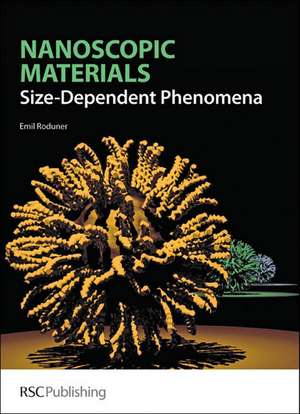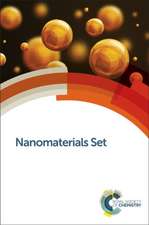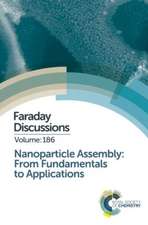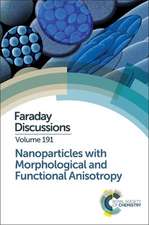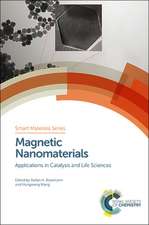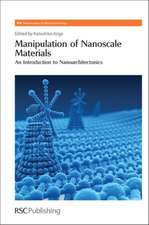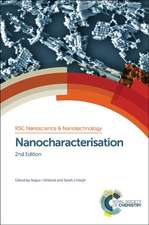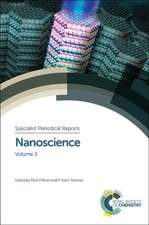Nanoscopic Materials: Size-Dependent Phenomena
Autor Emil Roduneren Limba Engleză Hardback – 31 iul 2006
Preț: 337.77 lei
Nou
64.64€ • 70.19$ • 54.30£
Carte tipărită la comandă
Livrare economică 22 aprilie-06 mai
Specificații
ISBN-10: 085404857X
Pagini: 285
Dimensiuni: 161 x 239 x 22 mm
Greutate: 0.59 kg
Editura: Royal Society Of Chemistry
Locul publicării:United Kingdom
Cuprins
Recenzii
Textul de pe ultima copertă
Nanotechnology has been hailed as a key technology of the 21st century. The scope of this field is huge and could have a wide influence on many aspects of life. Nanoscience; the manipulation of matter at the atomic and molecular level, and nanomaterials; materials so small that their behaviour and characteristics deviate from those of macroscopic specimens and may be predicted by scaling laws or by quantum confinement effects, are discussed in Nanoscopic Materials: Size - Dependent Phenomena.
The book focuses on a qualitative and quantitative approach discussing all areas of nanotechnology with particular emphasis on the underlying physico-chemical and physical principles of nanoscience. Topics include electronic structure, magnetic properties, thermodynamics of size dependence and catalysis. There is also a section discussing the future potential of the field and the ethical implications of nanotechnology.
The book is ideal for graduate students of chemistry and materials science and researchers new to the field of nanoscience and nanotechnology.
